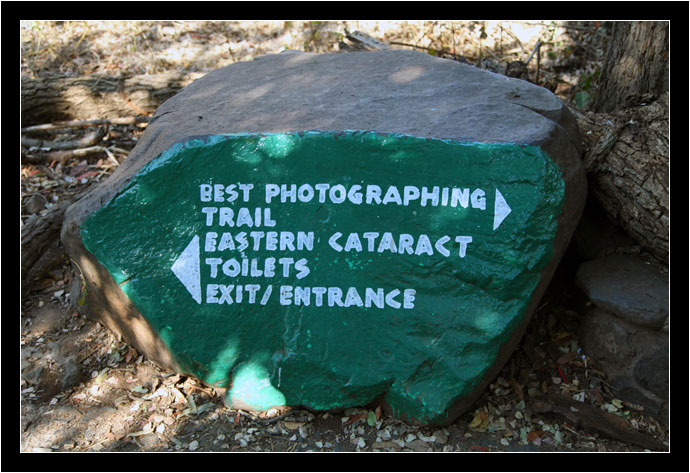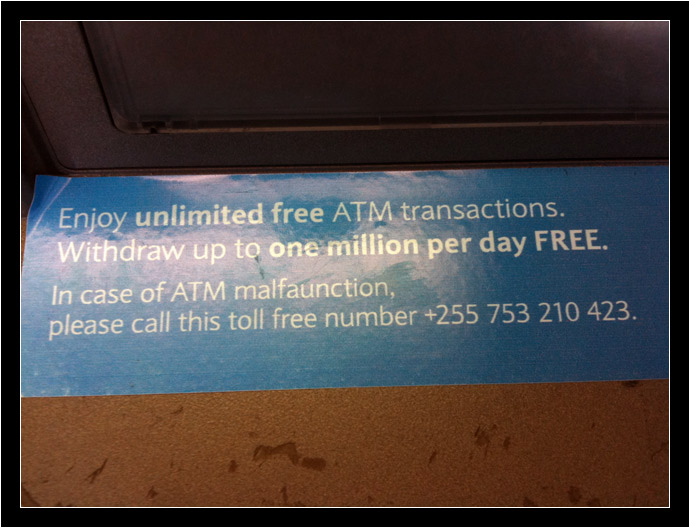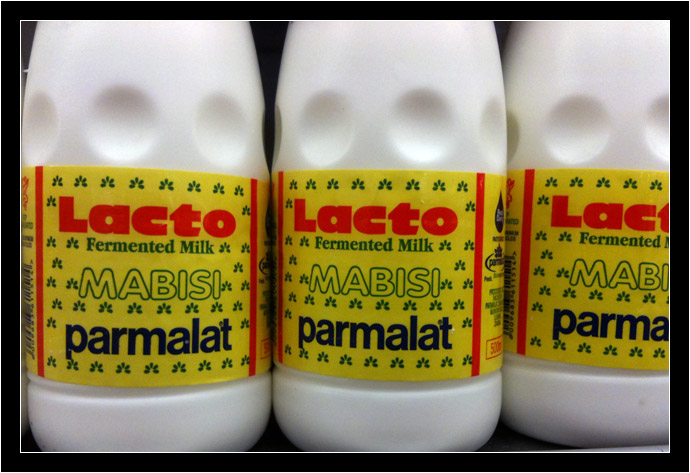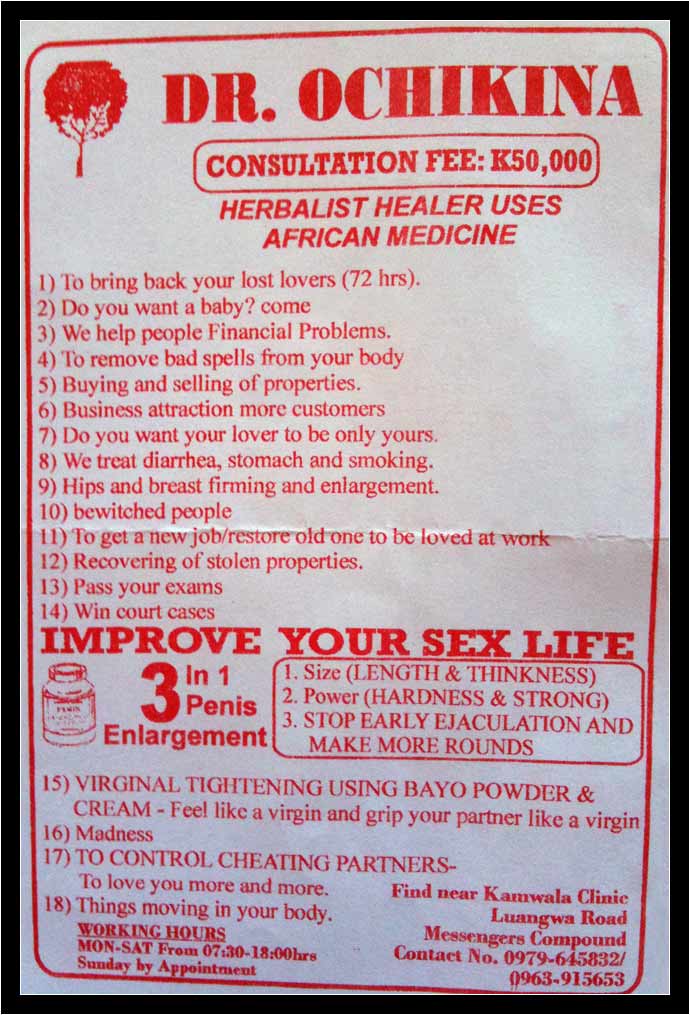
We didn’t realize how large Zambia was until we bussed across it. The whole reason for visiting was to see Victoria Falls, which is in the south. Since we entered from Namibia, we didn’t have that far to go to reach our destination. Our plan afterward was to climb (or at least see) Kilimanjaro in Tanzania, which is on Zambia’s northern border. Getting there was a nightmare.
Our first bus from Livingstone to the capital, Lusaka, was only six hours. The following day we decided to push all the way to Dar es Salaam. We spent 34 hours on that next bus, with the same four Thai martial arts movies on a loop and no air conditioning. It just about did us in.
Before all that, however, we spent about a week in Livingstone. Being such a tourist hotspot, it was more comfortable (read: wealthy) than most of Zambia and we enjoyed our time there. Most of my observations are from that area; I expect things where much different in the rural parts of the country.
The first couple things I noticed were already hinted at in the tail end of the story I wrote about traveling from Botswana to Zambia. I’ll just touch on them lightly again:
Social Infrastructure

A sample of poor infrastructure. This was all the "map" you got in the world famous Victoria Falls Park
After traveling through three countries – Botswana, Namibia, and South Africa – that all seemed roughly the same at first glance, it was a shock to arrive in Zambia. As soon as we crossed the border, everywhere we looked reinforced the reality of the country’s economic status. Zambia was poor.
I write that and worry that someone from Zambia may one day read this and take offense, but you know what? Some of the first people we met in Zambia told us exactly that. “Zambia is a poor country… but the people are friendly!” He said it almost as a badge of pride; as if the people in other poor countries were not so friendly. Zambians are friendly despite being poor.
But poor they are and it’s hard to miss. Once we passed through the dilapidated border control station, we drove to a small town, called Sesheke, so we could catch a bus to Livingstone. The roads were in poor repair and the shops alongside them were set a couple dozen meters back with nothing but dusty brown dirt in between. Hundreds of people sat idle, some selling items on temporary, makeshift tables, and some yelling to get the attention of passersby. None of them were cleaning up the garbage that had been strewn everywhere.
To be sure, I’ve seen worse on our travels. And, if I were to be honest with myself, Zambia was pretty much exactly what I expected Africa to be. It was just a shock after spending a couple months in more affluent countries.
As for friendly, Zambians certainly were that. We had no end of people offering to help us during our stay. Standing on the corner, looking at a map, someone would come up and ask us where we wanted to go. As we walked into the Victoria Falls Park, vendors would tell us, “Mind the baboons!” (Good advice, it turned out.) And on our epic 34-hour bus ride, the conductor asked a fellow Zambian to make sure we got through immigration and back to the bus okay.

Languages
We learned on our first taxi ride that the government recognizes seven official languages in Zambia. I have no idea if that means all government forms and whatnot need be printed in all seven languages – seems like that would be an expense the country couldn’t afford. For what it’s worth, Zambia was very easy to navigate using English alone.
In our first shared taxi, we had four other passengers, two of which spoke English fairly well. Of those four, three were raised with different primary languages. They used a common language whenever they were talking among themselves, but I couldn’t tell you which of the seven official languages it was.
We learned that there we something like 77 languages in the country as a whole and they sort of said that like it was no big deal. When one of the passengers tried to teach us a simple, useful phrase (How are you? / I’m good.), two of the other guys wanted to teach us how to say the same thing in their own languages. In less time than it took to say them all, Oksana and I were hopelessly confused (I mean, seriously: I couldn’t even remember the names of the languages, let alone the phrases they were trying to teach us!)
I got the impression that this sort of exercise would be cake for them. Perhaps language acquisition is a skill that develops naturally when you grow up in a multilingual environment. The more bilingual people I meet, the more I think that may be true.
After that car ride, I would have sworn that I forgot everything they’d tried to teach us – Can you even forget something you failed to learn in the first place? – but when we were sitting at a picnic beach in the Victoria Falls Park, I happened to hear a guy greet a girl.
“How are you?” he asked.
“Good.” She replied.
I had to smile.
Currency

The national currency for Zambia is the Kwacha. Took me long enough to even remember the name: “Gimme five Kwacha for the onion!” you’d say. Where was I? Oh, yeah. The important thing was that I had an onion tied to my belt, which was the style at the time. You couldn’t get white onions, because of the war. The only thing you could get was those big yellow ones…
Whoops. Simpsons tangent.
The exchange rate was pretty high while we were there. Something on the order of 4,700 Kwacha for a dollar. We became millionaires anew, every time we went to the ATM.

But that’s not why I put “currency” on this list. I put it on the list because Zambian money is stupid.
We’re used to spending Monopoly money when we travel. All colorful foreign currency looks strange to our green-adjusted, American eyes. The problem with Kwacha was that every bill looked the same. One side of every brown-tinged bill – be it 50,000, 20,000, 10,000, 5,000, 1,000, 500, or 100 notes – even had the exact same drawing of an eagle on it!
Most currencies we come across are even sized differently, depending on the denomination of the note. I presume that’s to help people with disabilities figure out what they’re holding, but even I would have welcomed even that with the Zambian currency! I’m sure the locals have it all figured out, but I held up the line at the supermarket every time because I still had to individually study each bill in my wallet to make sure I was pulling out the right amount.
Transportation
Taxis
Taxis in South Africa were impossible to identify from the sidewalk and you couldn’t expect to hail them, anyway. In Botswana, you could tell a licensed taxi by its blue license plate. In Zambia, they go one better and paint the whole taxi blue. Progress!
Shared Taxis
Whenever you found yourself negotiating for a taxi, you had to make sure you weren’t talking about a shared taxi. They’re basically the same thing – both will take you to your destination – but the shared taxi might take a little longer. Not only might you have to stop along the way to pick up or drop someone off, but you may have to wait around quite awhile before leaving in the first place. The driver wants to load up his car with paying customers before he sets off. Of course, for all this trouble, you do get to pay a lesser fare.
Speakers
I’m not used to having a good audio/video experience on a bus, but both buses we took in Zambia had sound systems that were quite good. Movies played through them okay, but it was when they put on some music that I really noticed. In South America, you can almost guarantee that the speakers on buses have been abused at high volumes for so long that they’re now only capable of distorted bass and clipped highs. I can’t say that I really appreciated the Zambian music that was playing, but at least I could hear its full range.
Gas Prices
Gas prices are high in Zambia. I saw at least one sign saying 8,647 Kwacha per liter. Back-of-the-napkin math says that’s about $7 USD per gallon. Pretty steep for a country whose average per capita income is about $600 USD a year.
So how can anyone afford to drive? By stealing gas, I imagine. On our 3-hour shared taxi ride from the border to Livingstone, we stopped twice, at out-of-the-way homes, to trickle a little extra gas in the tank. I don’t really know where that rogue gasoline came from, but I’m guessing it was siphoned off the tanks at a legitimate gas station by an employee who works there. Just making a little money on the side, you know?
The irony is that theft like that is probably what keeps the prices so high.
Road Signals
At night, when the roads were dark, I noticed something strange. As two cars approached each other from opposite directions, drivers of both would put on their turn signals. The scary thing was that they were both indicating a turn into the oncoming lane!
After I saw a cab driver do it on the isolated stretch of road between Livingstone and Victoria Falls, I asked why. He told me it was so that each driver can better gauge the gap between the cars in the dark. I can’t see how that would help… unless some cars don’t have their headlights mounted on the outer edge of the vehicle. I’m sure some of the roads in Zambia are dangerously narrow. So okay, whatever works.
If they use their turn signals to indicate that they’re staying in their lane, I wonder how they indicate when they actually want to pass. Probably with 19 short taps on the horn. (1-18 being reserved for other common driving activities in Zambia, like getting someone’s attention or pushing down on the accelerator.)
Donuts
The donuts in Zambia are very much like the donuts back home. Deep fried, glazed, and sometimes stuffed with jam or custard. I think we might have been a little homesick, because we had donuts almost every day for breakfast.
Maheu

Not actually Maheu, but still interesting!
We read about a corn drink called Maheu and when we saw all these different flavors in the store, we had to try it.
Sometimes we’re reminded that we don’t always need to try the local cuisine.
Our Maheu came in a small plastic bottle with an aluminum, tear-off lid. When I shook it, the the liquid felt slightly thicker than normal, but that didn’t put me off. In fact, combined with the flavor offerings – banana, strawberry, chocolate, etc. – it had me anticipating a nice smoothie or liquid yogurt.
One sip was all we could stomach. The taste and texture was overwhelmingly corn.
Imagine taking a candy-banana flavoring and stirring it into a can of creamed of corn. Now chill that, shake it up, and roll it around on your tongue. That’s Maheu.
Eating with Your Fingers
We didn’t eat out a lot in Zambia, but when we did it seemed to me as though it was more socially acceptable to eat with your fingers. Nothing crazy, like spooning up shovelfuls of chicken noodle soup with your palm or anything. Just, you know, more people eating with their hands.
Burrs

When we were walking around the Victoria Falls, especially on the bushy climb down to The Boiling Pot, we noticed all manner of little twigs stuck to our pants. After the climb back out, we set about carefully plucking them off our clothes.
I expected them to be like all the burrs I’ve seen before – spiky little balls that are better tolerated when they poke through the fibers of your clothes rather than the soles of your feet. Instead, these burrs – if you can still call them that – looked like tiny sticks with 6 or 8 little sticky balls attached to them. When I pulled them off my pants, the gummy stuff they exuded just as easily stuck to my fingers.
That’s a cool evolutionary adaptation. Both sharp spikes and sticky balls get the job done, but I’ll bet the sticky seeds travel further, if only because the animal transporting them are less likely to notice.
Fires
At night, while driving through Zambia, the eeriest sight you’ll see are the bright orange fires burning along the side of the road. Imagine a long dark road, black as a moonless night, with nothing but your headlights illuminating a cone in front of you. Suddenly a glow flickers up ahead, racing toward you. Red and yellow flames, two meters high, rush by on the side of the road, close enough that you can feel the heat through the window. The fire lights up the roadside for an instant, and then it’s gone, fading to a spark in the rearview mirror.
Actually, come to think of it, driving into a herd of elephants on the road at night would be eerier than that.
Anyway!
At any given time, there are probably hundreds of fires burning out of control in Zambia. We saw dozens on a single taxi ride through the countryside. Every one of them was a grass fire.
The grass in Zambia is tall, yellow, and terribly dry. There are fields of it alongside the road and it leads back into the bush. The bush itself has trees, but it isn’t so much a forest as it is a sort of scrubland of grass and bushes. The first time I saw walls of bright orange flame advancing through the bush, I thought we were seeing the beginning stages of a forest fire. After driving by a half dozen other fires, I started to see what was going on.
The grass burns quickly and the fire destroys it without mercy, but because the grass burns so quickly and completely, the fire never has enough time to ignite the other trees and bushes. Whole fields of grass will be blackened and besides a bit of ash clinging to their trunks, the trees among them stand untouched.
As we passed by at 120kph, I saw fires burning right next to small villages made of nothing more than reeds and sticks, and yet I never saw anyone moving to put it out. Later, I saw the after effects of a field that had burned out and realized why. There was a footpath, a dirt track through the wheat-like grass no wider than 6-inches across, that acted as a complete firebreak. On one side of the narrow path, nothing but black ash. On the other, a field of honey-colored grass. If 6-inches are all it takes to create a firebreak, no wonder no one’s worried about all these grass fires.
Body Odor
I suppose I should have put “body odor” on the list of things I’ve noticed in other countries, but it’s familiar enough when traveling. Not everyone showers as much as Americans and fewer still can afford to buy deodorant. In hot countries, such as Zambia, the odor can build to impressive levels.
I can sympathize. I’m sweat a lot, too, in that tropical climate and I haven’t been able to find a stick of my preferred brand of deodorant since the one I packed ran out back in Peru. Not only that, but all those microfiber North Face/REI/Patagonia shirts I thought would be so great for travel stink to high heaven! The quick-dry, “water wicking” fabric manages to suck up all that bacteria from your armpits and hang onto it like a sponge.
I can’t tell you how many times I was in a supermarket and catch a whiff of imposing body odor. I’d I’d put my nose to my armpit for a surreptitious sniff and, more often than not, realize it was just because someone else had walked past me.
Witch Doctory
While walking the streets of Lusaka, the capital of Zambia, I was handed this small pamphlet. Normally, I don’t accept advertisements on the street, but I’m so glad I did this time! Read through it. It’s amazing!

I don’t know what it says about a society that this sort of thing is circulating. Just because it was put in my hand, doesn’t mean that the majority of the population believes in everything printed on it. Still… how many of these items would qualify as outright illegal to perform in the States?
Use the comments below to tell me which of these items you’d pay for!
Bats

They have bats in Zambia and drink from swimming pools while in flight! Okay, so that’s probably not specific to Zambia. I just think this photo is really cool and wanted to share it.

We went to a Chemist’s shop in Gaborone and saw all kinds of elixirs and potions for everything under the sun. The one that bothered my the most was a large jar of brown liquid that boasted of it’s ability to not cure, but something along those lines, HIV and AIDS. Did you notice, in Pretoria, the signs plastered EVERYWHERE for penis enlargement pills?! “…and make more rounds” – ?! O, Africa, how I miss thee!